7 Best Ahrefs Alternatives (Free and Paid)
Written by Brian Dean
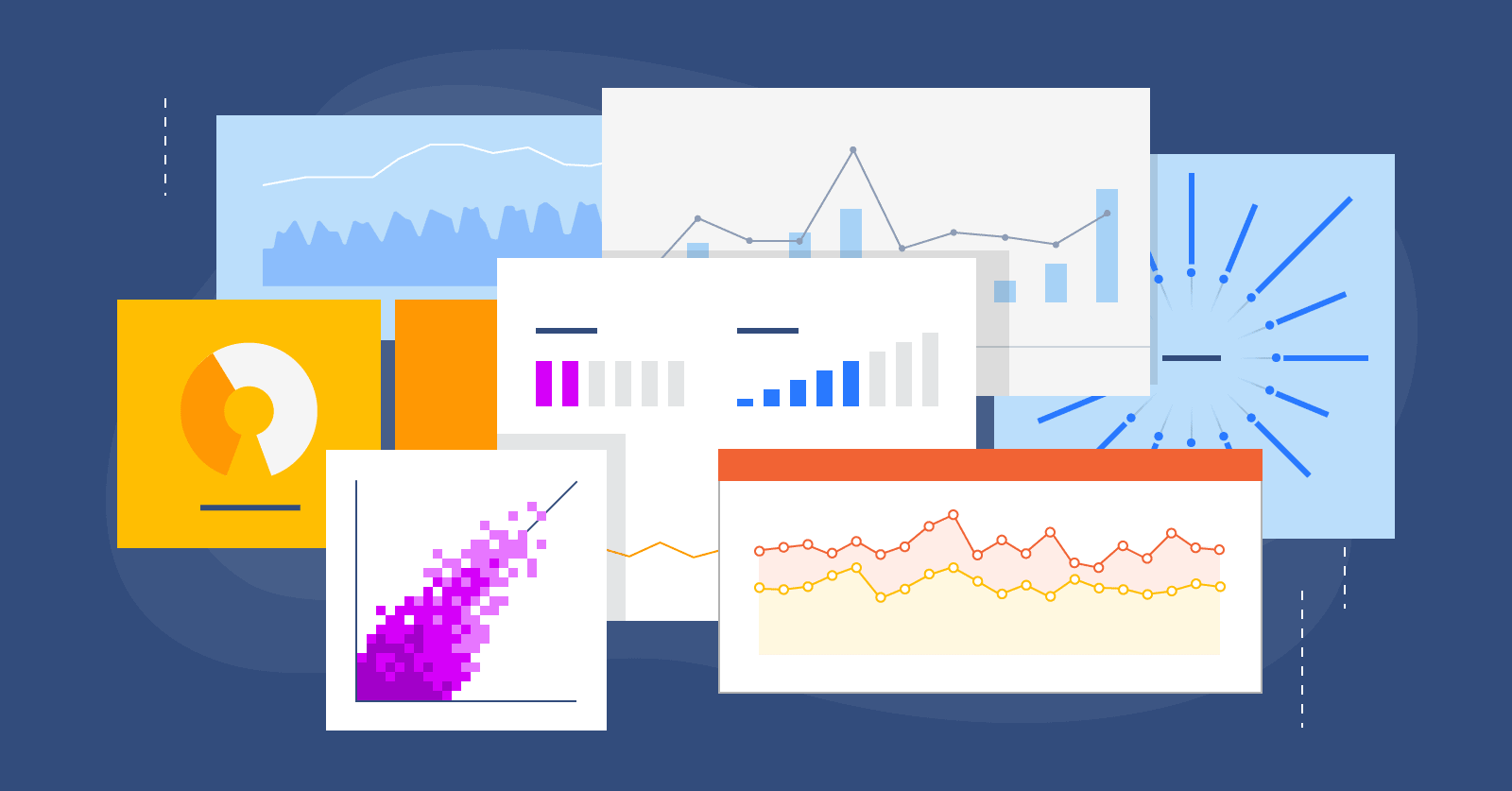
Need an alternative to the popular SEO tool, Ahrefs?
In this post I’ll provide both paid and free alternatives and highlight their primary differences to Ahrefs, so you can get a sense of which might be the best fit for your needs.
So if Ahrefs isn’t a good fit for you, check out the list below for your best options.
Paid Alternatives to Ahrefs
1. Semrush
Semrush is one of the most popular SEO tools on the market.
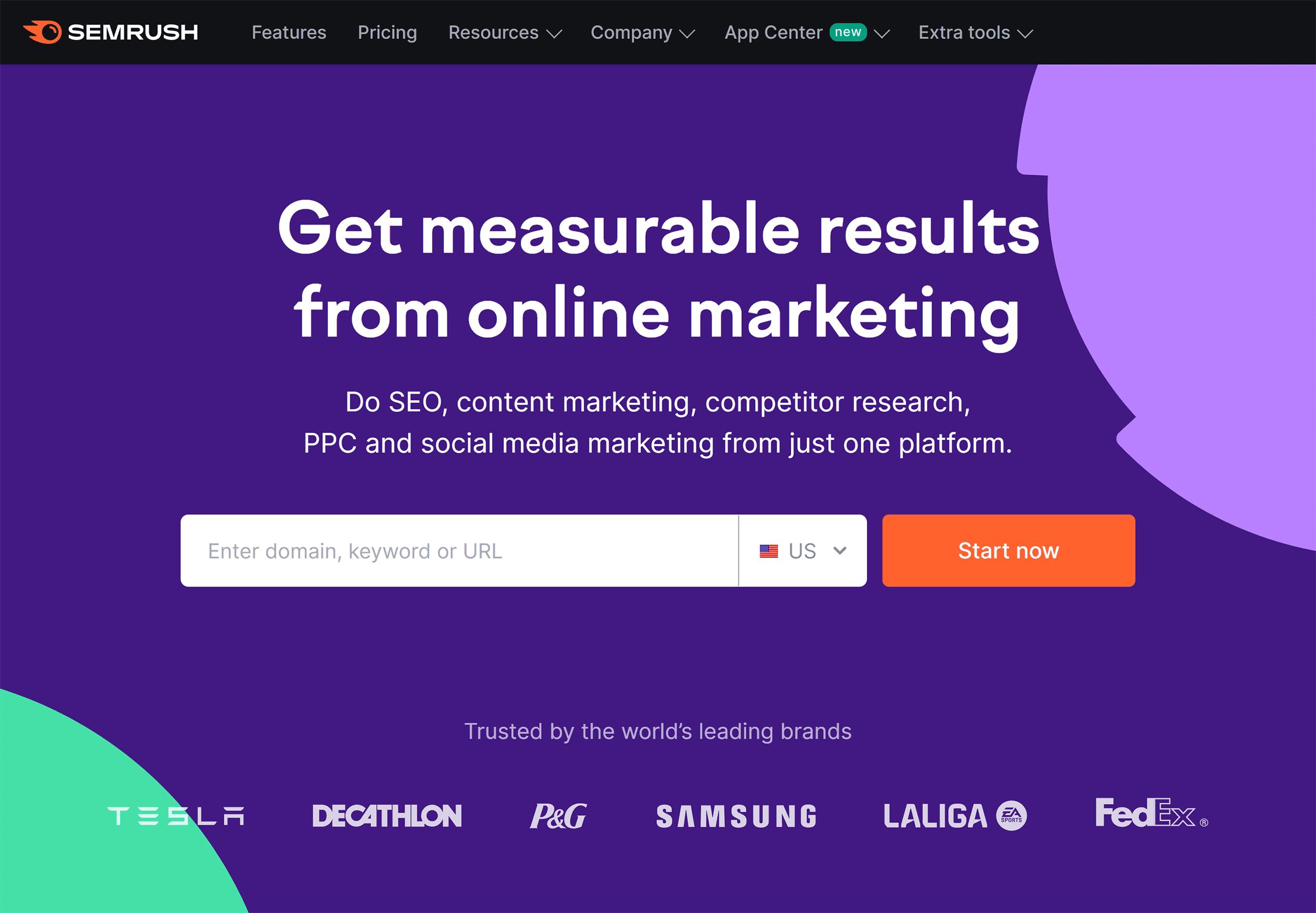
And for good reason: it’s REALLY good.
In fact, I’ve been a paying Semrush customer for over 12 years now:

Over that time I’ve seen it evolve from a keyword research tool for PPC to a full-on SEO software suite.
Today, besides its standard keyword research features (like search volume, CPC etc.), Semrush also has a ton of helpful features like:
- AI visibility tracking
- Traffic analytics (where a site gets its traffic from)
- Backlink analytics
- Rank tracking
- SEO site audits
- On-page SEO analysis
- And lots more
In my opinion, Semrush is probably the closest tool to Ahrefs out there (both in terms of feature quantity and quality).
How Semrush Compares to Ahrefs
I already wrote a complete Semrush vs. Ahrefs breakdown here. So if you want a super-detailed list of how Ahrefs and Semrush compare, check out that review.
A quick note is that on the AI side, both Semrush and Ahrefs now give you share of voice metrics and visibility scores in LLMs. However, Semrush’s AI Visibility Toolkit is better if you want AI visibility plugged into your SEO workflows and client reporting (prompt tracking, sentiment, and site fixes in the same place).
But the bottom line is that Ahrefs and Semrush are overall pretty similar.
Similar in terms of features. Similar in terms of quality. Fairly similar in terms of pricing.
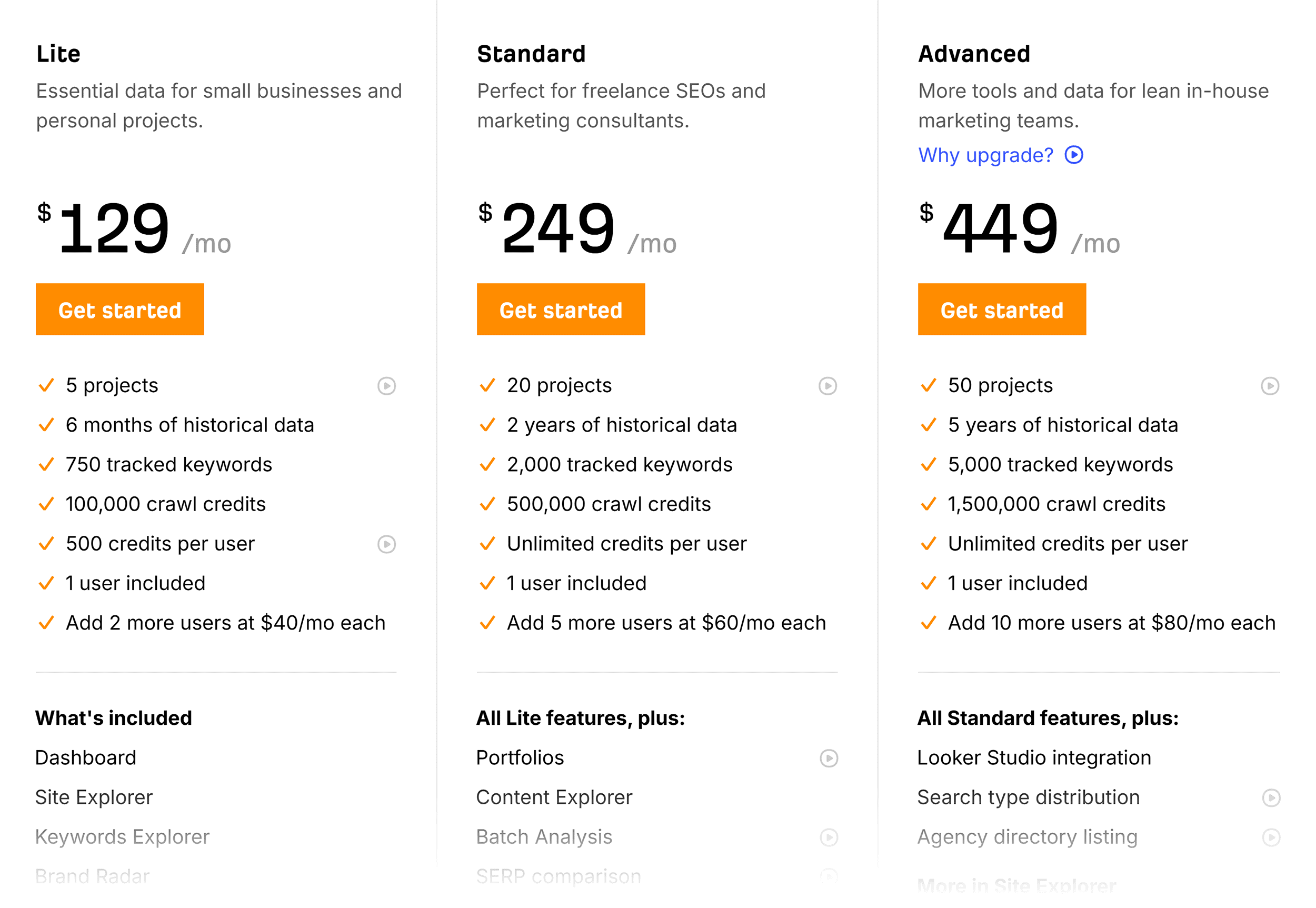
Ahrefs has standard plans with add-on options, including the Brand Radar AI, which allows you to see how your brand is appearing in LLM answers and citations.

Semrush also has base SEO packages, but they’ve restructured their pricing to be broken down into “toolkits,” each containing the functionality you need for different aspects of marketing.
This is one of my favorite aspects of Semrush: They offer a suite of marketing solutions outside of strictly SEO to help you achieve overall brand visibility.

They recently released their Semrush One plan, which gives you access to their SEO and AI Visibility toolkits for $199/month, which is a great deal and serves as an excellent alternative to Ahrefs if you want to keep the typical SEO tools while layering on AI analytics.
2. Moz Pro
I’ll cut right to the chase:
Moz Pro isn’t a bad SEO tool.
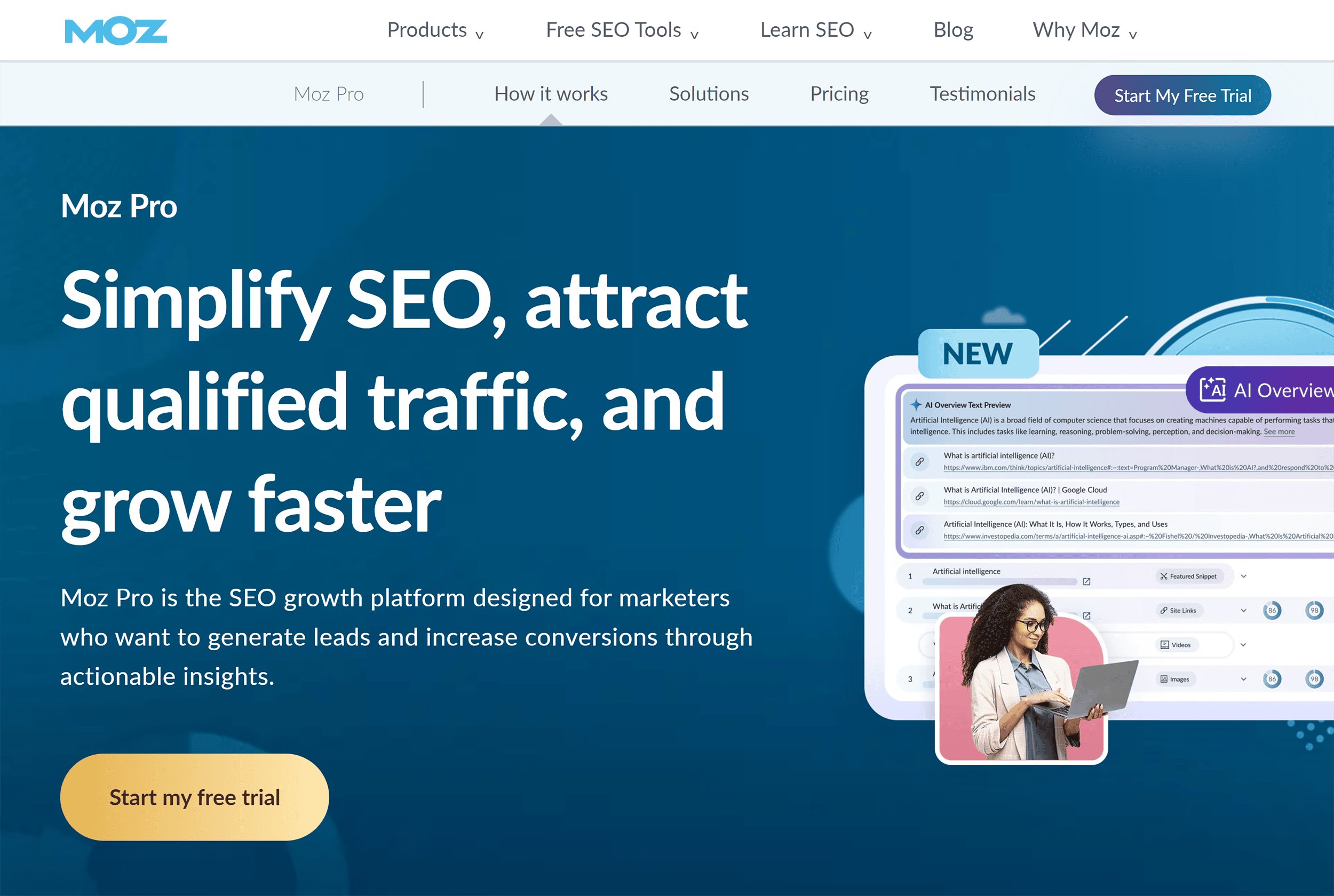
But it’s not quite at the level of its two main competitors: Ahrefs and Semrush.
For example, on keyword data alone, Moz’s Keyword Explorer works from about 1.25 billion keyword suggestions, while Ahrefs’ Keywords Explorer pulls from around 28.7 billion keywords/topics, so Ahrefs gives you significantly broader coverage for competitive and long-tail research.
How Moz Pro Compares to Ahrefs
In addition to the index size differences, my main issue with Moz is the lack of filtering options.
For example, in the Inbound Links section, I can’t filter by date acquired, anchor text, link placement location, etc. The only options are Link type (dofollow, nofollow, etc.) and Link State (active, lost, etc.)

This lack of functionality seems small at first but compounds pretty quickly, especially when the pricing for the standard package isn’t too far off Ahrefs and Semrush.

3. Majestic
Even though it’s getting a little dated, Majestic SEO is still one of the top SEO tools on the market.

Majestic is 100% focused on backlink reports. So if you want a tool that takes care of all of your SEO tasks in one place, Majestic SEO probably isn’t a good fit for you.
But if all you care about is backlink data, Majestic SEO is actually pretty solid.
As you can read in my full Majestic review, I can’t criticize the data you find in the tool all that much. It’s actually solid tech.
The main problem is that the UX is super outdated.
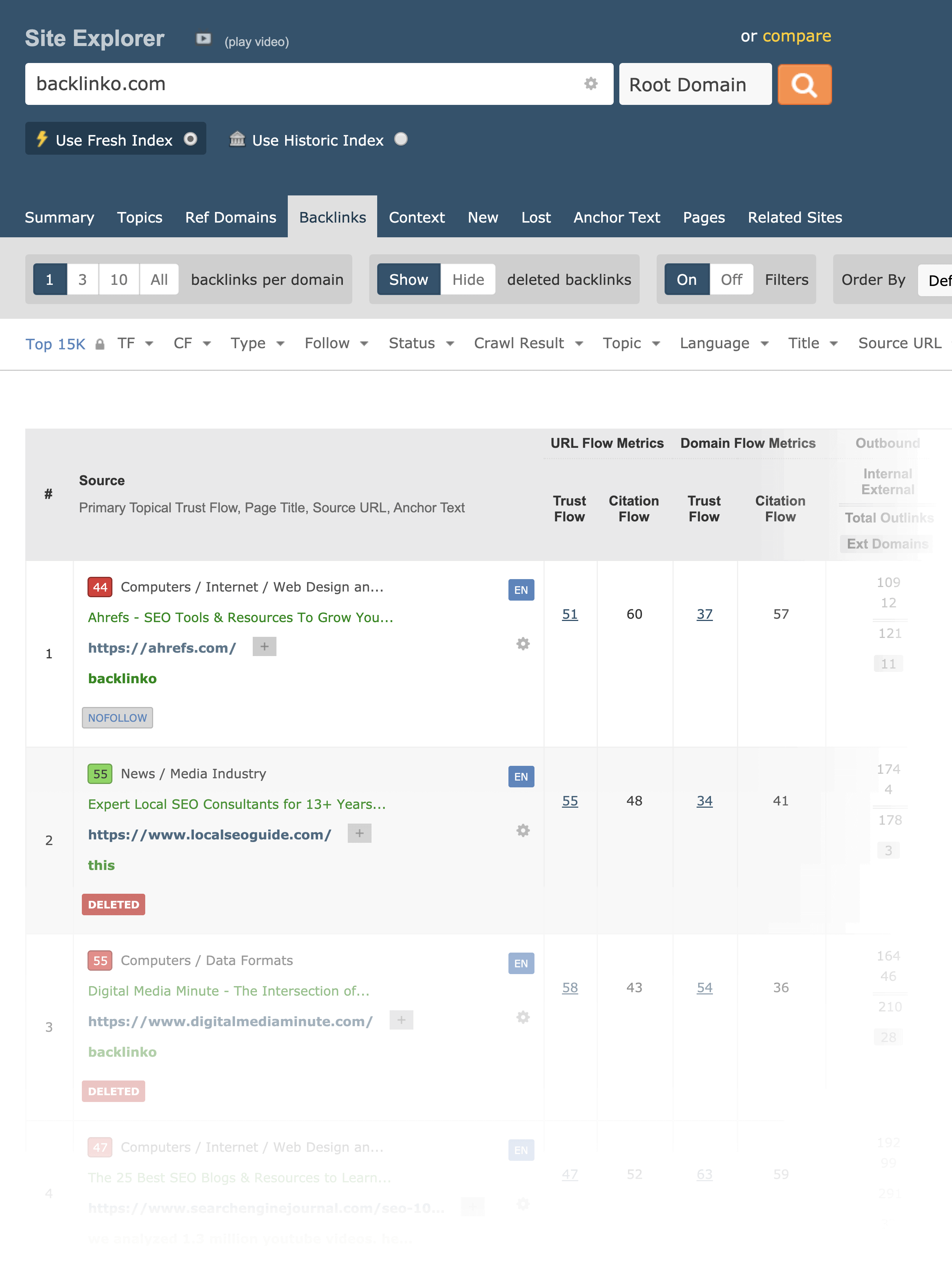
And I’m not just talking about the look and feel. I don’t really care about that. It’s more that the backend is tricky to use. Especially compared to Ahrefs.
How Majestic Compares to Ahrefs
In terms of pure backlink data, Majestic SEO isn’t a bad Ahrefs alternative.
But you can’t really evaluate a tool based only on the data it provides. You also need to take into account UX, key features, customer support, and more.
And when you take all that stuff into account, Ahrefs comes out way ahead.
For example, you can use Ahrefs for pretty much all of your SEO tasks. Keyword research. Technical SEO. Rank Tracking. And more.
Majestic doesn’t have any of that stuff. It’s a 100% pure link building tool.
That said, the price of Majestic reflects the lack of features. It starts at $49/month.

Which is about half the price of Ahrefs.
So if you’re someone that pretty much ONLY cares about backlinks, then you’ll probably get an insane amount of value from that 50 bucks.
But if you want an all-in-one piece of SEO software, Ahrefs is probably your best bet.
Budget Alternatives to Ahrefs
Before we dive in, a quick note that these options should be compared to Ahrefs’ $29/month Starter plan, which allows you minimal access to their tools.
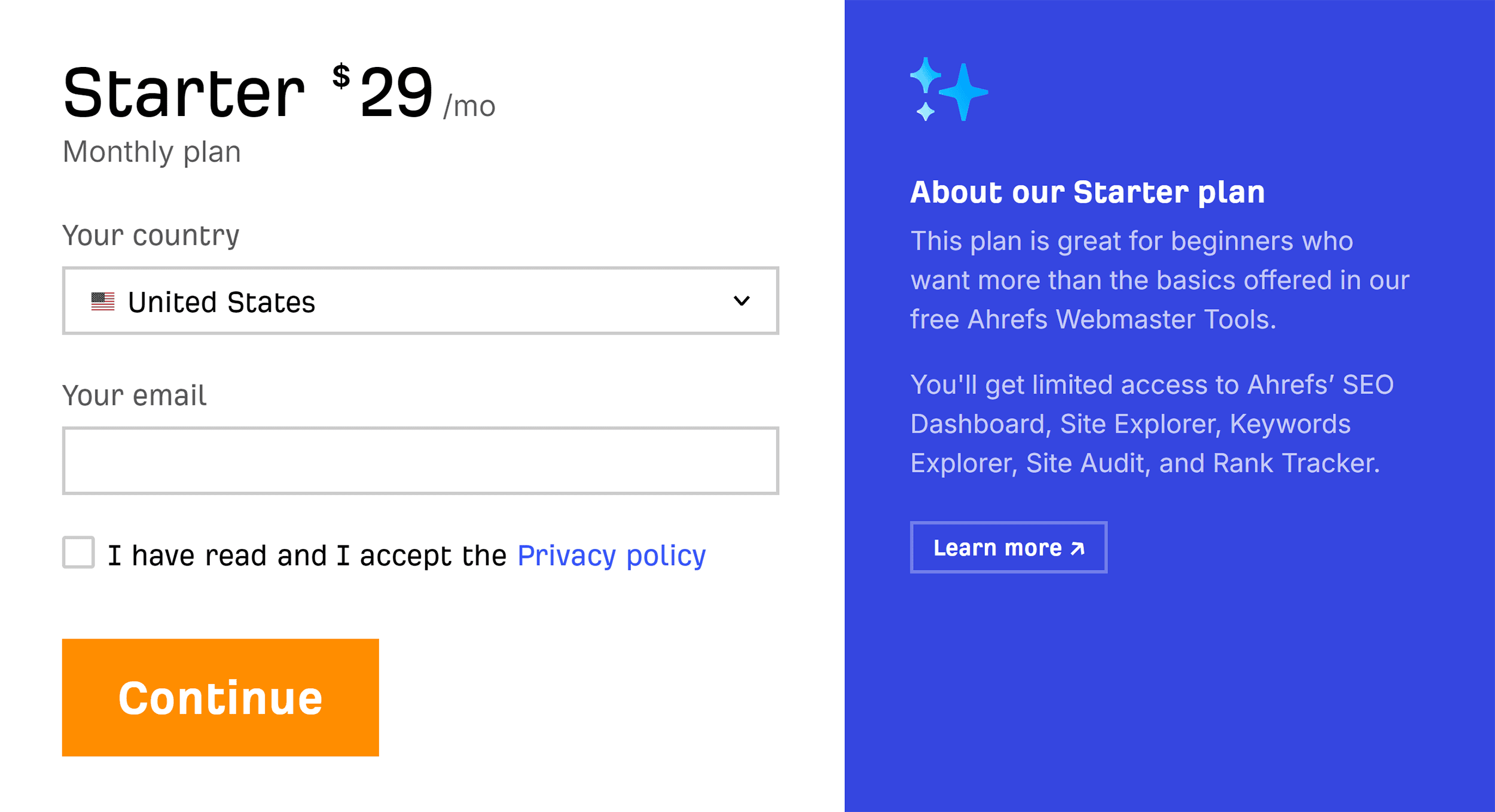
4. SE Ranking
SE Ranking is an all-in-one SEO platform that covers most of the core tasks you’d use Ahrefs for: rank tracking, keyword and competitor research, technical audits, and backlink analysis.
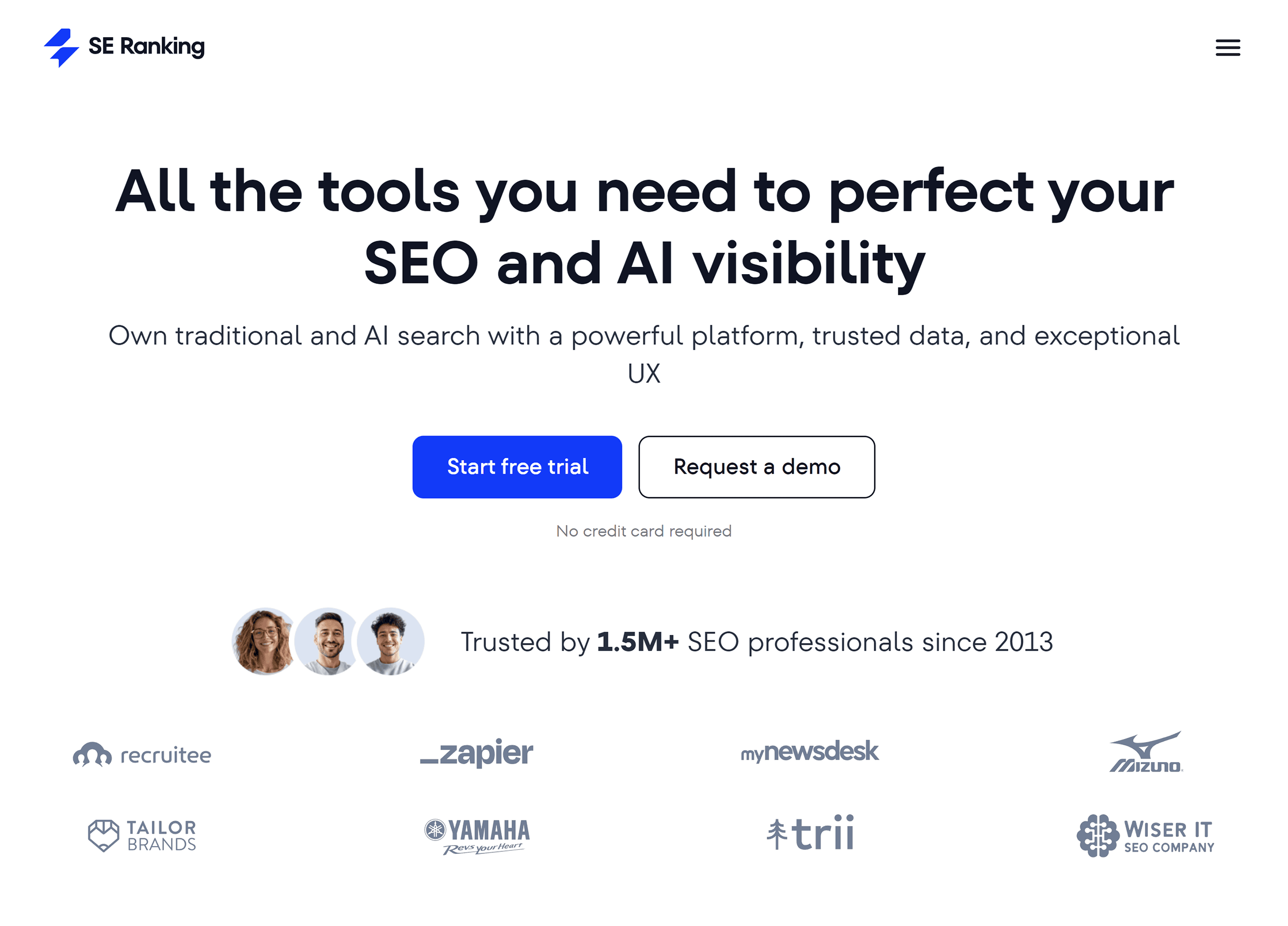
Some of SE Ranking’s standout features include:
- Rank Tracker with daily updates, Google Top 100 results, visibility rating, SERP competitors, and share of voice metrics
- Website Audit that scans for technical issues, page changes, and JavaScript rendering problems
- Keyword and competitor research to see what your rivals rank for and estimate their traffic
- Backlink Checker and monitoring tools for tracking new, lost, and toxic links
- On-page SEO Checker and content tools (content editor and a basic AI writer)
- AI Search add-ons that track how often your site appears in Google AI Overviews, AI Mode, ChatGPT, Gemini, and Perplexity
How SE Ranking Compares to Ahrefs
In terms of pure feature count and data depth, Ahrefs is still ahead. Its backlink index and keyword database are generally more robust, and many users find Ahrefs’ rank tracking more reliable than SE Ranking’s.
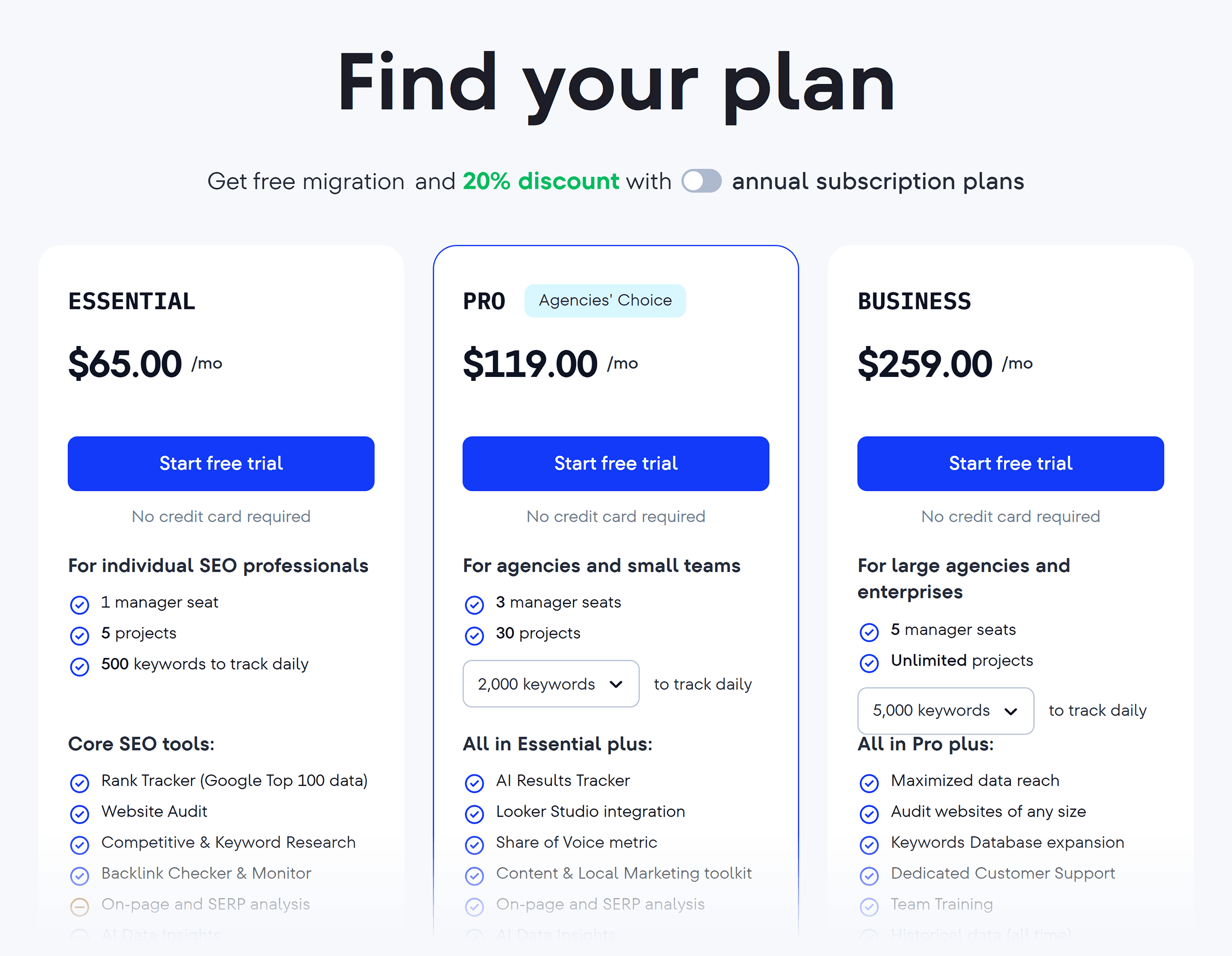
Where SE Ranking pulls ahead is on value and agency-friendly packaging. Plans start around $65/month with a free trial, compared to Ahrefs’ entry plan at $129/month. You also get multiple manager seats and a generous project limit on the higher-tier plans, which can make a big difference if you run an agency.
5. Ubersuggest
If you’re starting out with SEO, Ubersuggest is a solid option.
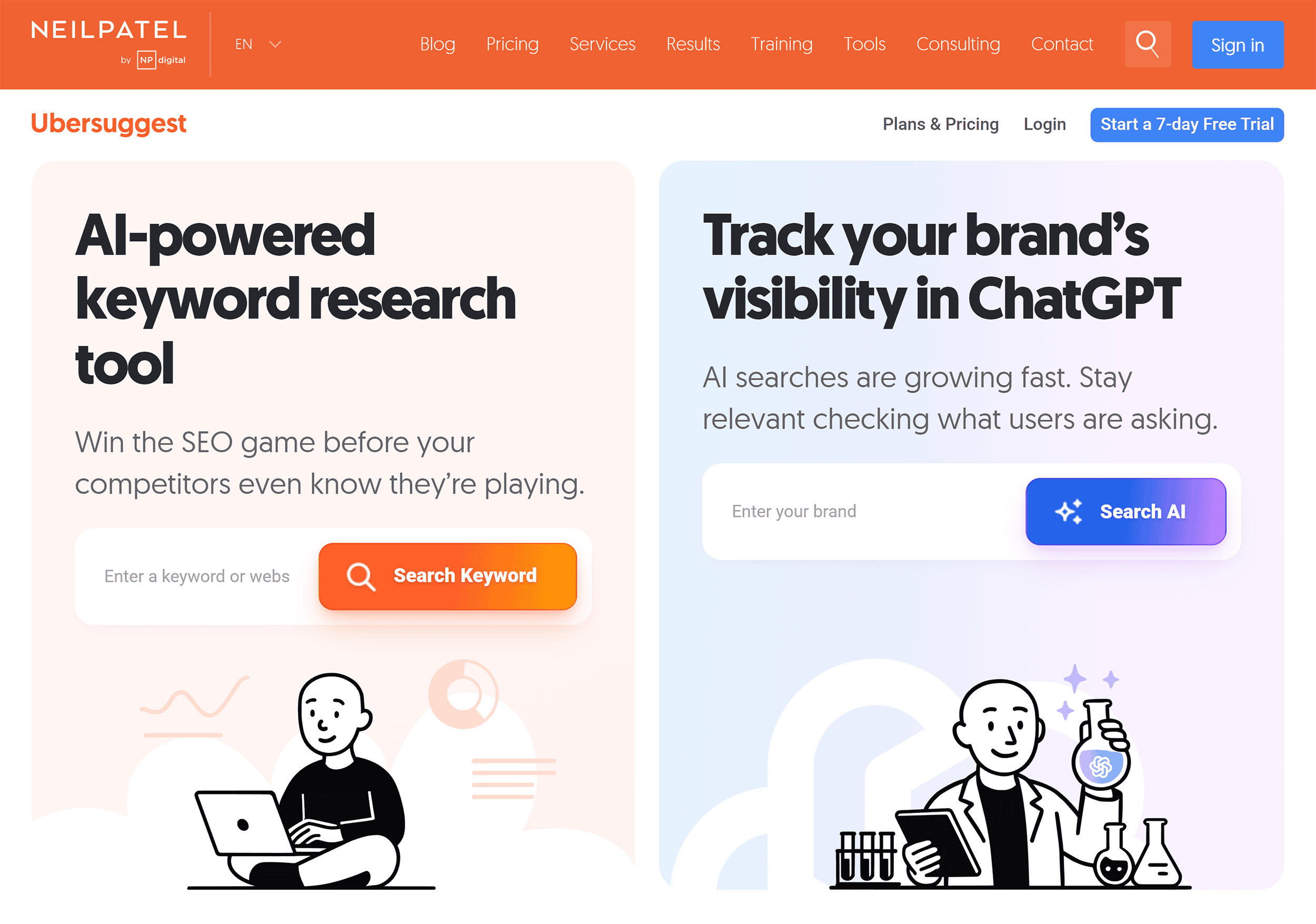
Why?
Because it has a wide range of features, including:
- Keyword research
- Topic research (like BuzzSumo)
- Backlink analysis
- SEO audit reports
- And more
Which is helpful if you have SEO clients or manage a bunch of websites.
How Ubersuggest Compares to Ahrefs
Ubersuggest is a high-quality tool, but it’s not as feature-rich as Ahrefs, and it works with smaller indexes for backlinks, keywords, etc.
So if I had to compare Ubersuggest and Ahrefs side-by-side based on features alone, I’d go with Ahrefs.
But there’s another important factor to consider: cost.
Ubersuggest is a flat $29/month.
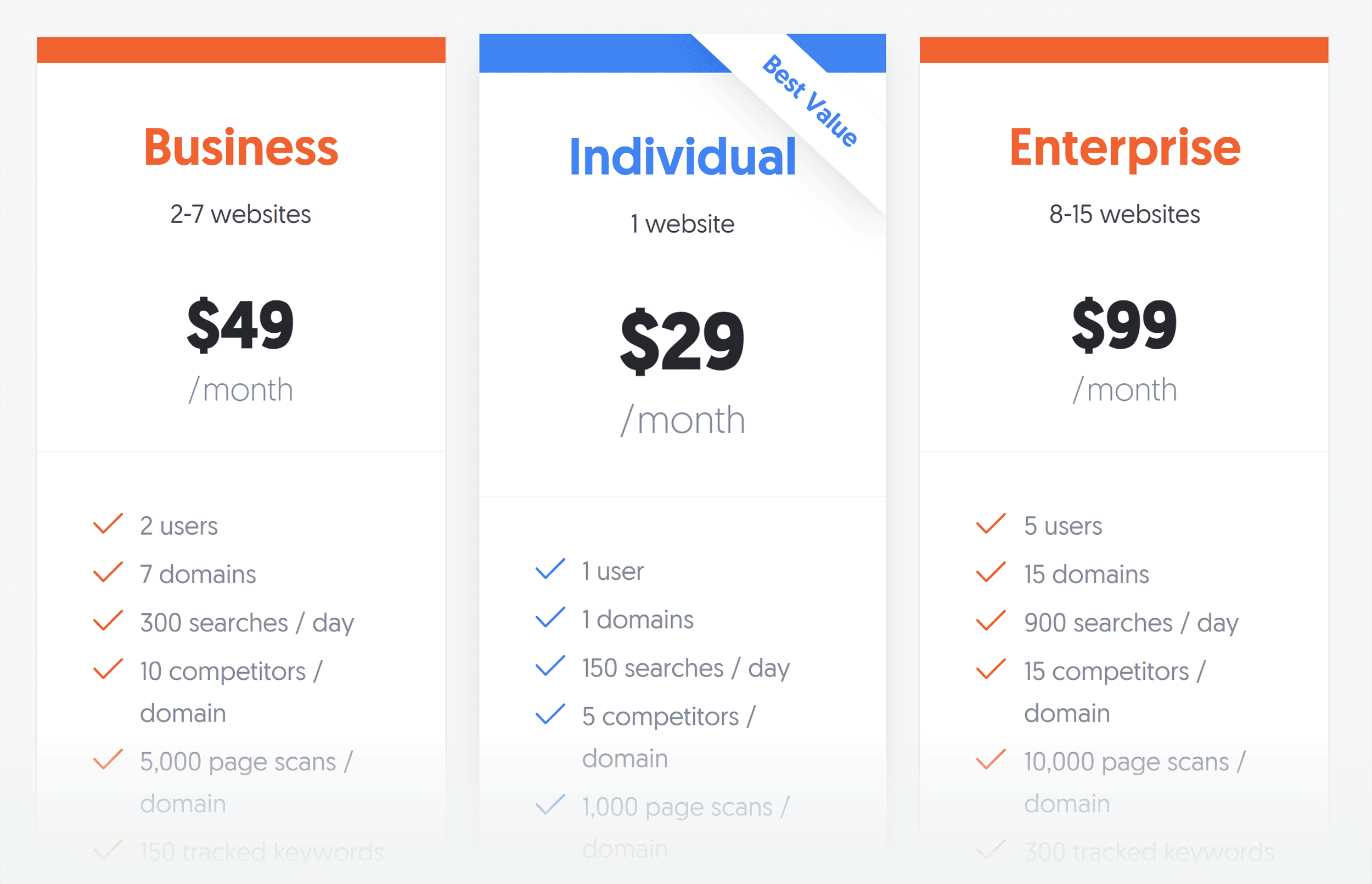
If you have a large marketing budget, I’d still probably go with Ahrefs.
But not everyone needs all Ahrefs’ features, and if you’re good with the basics, Ubersuggest is worth considering.
6. Mangools
Mangools isn’t your typical SEO software suite.
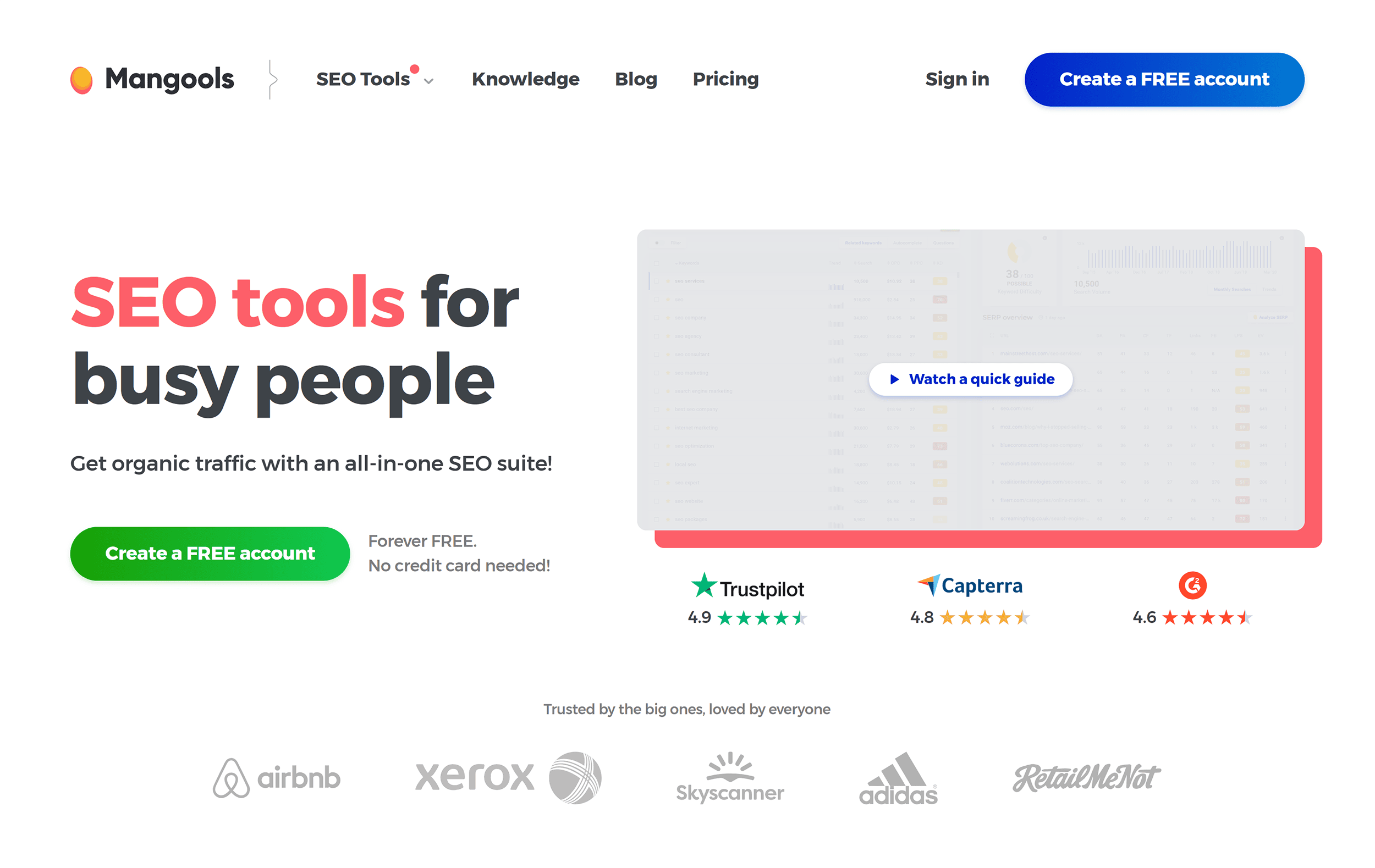
Instead of a bunch of integrated features, Mangools is actually 5 completely different tools.
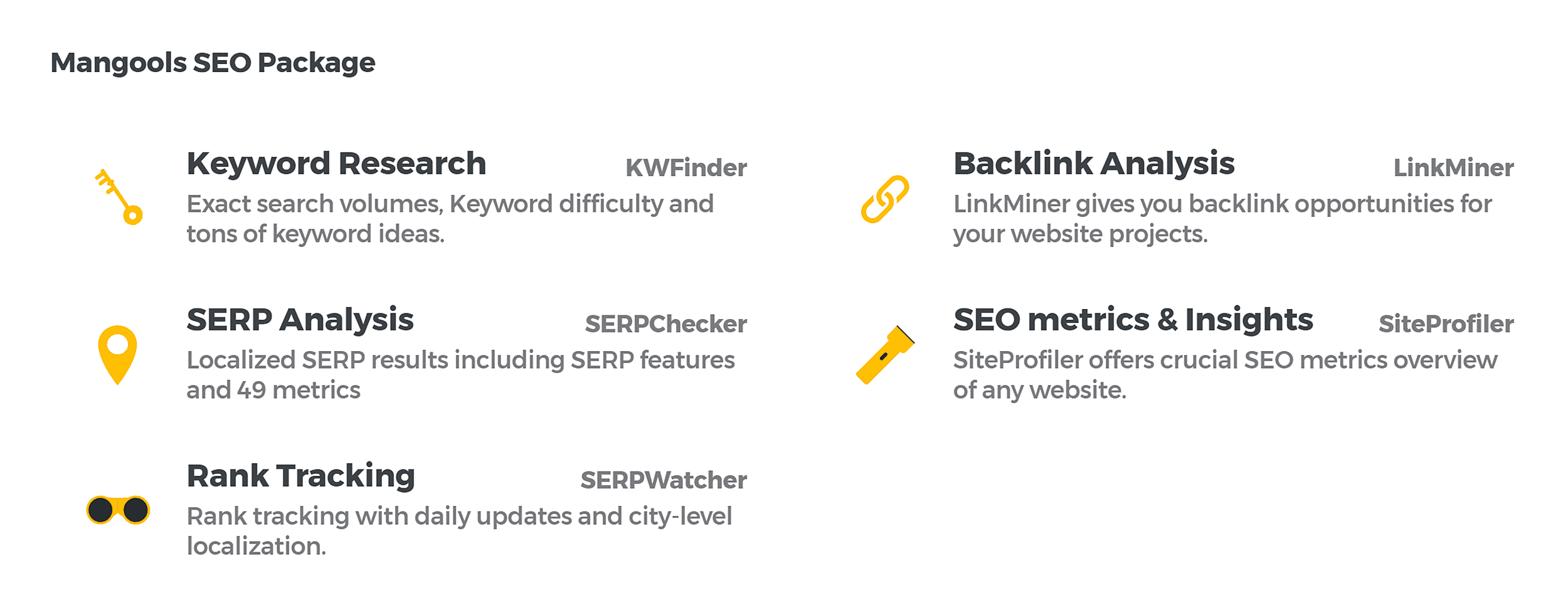
For example, let’s say you want to see the keywords that a site ranks for in Google.
Well, you’d open up “KWFinder” and type in the domain you want to look at.
And now you want to see that site’s backlinks. Well, now you need to go back to your dashboard, hit “LinkMiner” to open up their backlink tool, and start the whole process over again.
So yeah, this setup isn’t ideal. And it makes using the tool MUCH harder than it needs to be.
That said: as I write in my Mangools review, the tools themselves are actually pretty solid. Not quite at the level of Ahrefs. But not bad.
I just wish the tools were stitched together.
How Mangools Compares to Ahrefs
Similar to Ubersuggest, Mangools is a budget-friendly, beginner-first alternative to tools like Ahrefs.
You get a small suite of focused apps plus newer AI helpers like AI Search Watcher and the free AI Search Grader for checking brand visibility across AI search engines.
Where it falls behind Ahrefs is depth. LinkMiner’s backlink data and filters are more limited, and Mangools’ keyword and SERP data is fine for smaller sites, but it doesn’t match Ahrefs’ larger indexes and advanced filters for serious competitive or link research.
But also like Ubersuggest, Mangools is a cheaper option.
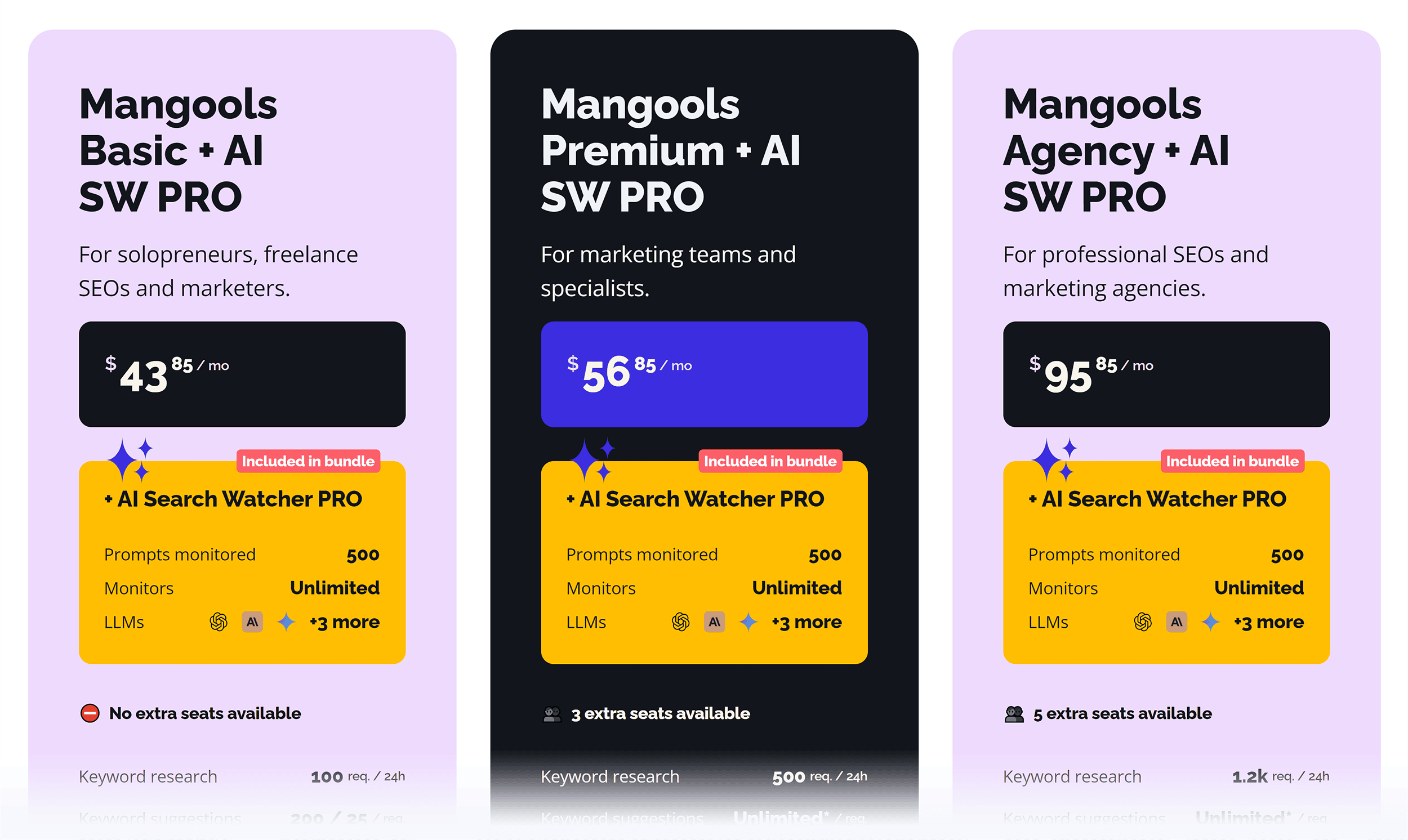
So if you’re on a super tight budget, you can still get a lot out of Mangools. But if you can swing 100 bucks a month, I recommend going with a tool like Ahrefs or Semrush.
7. Serpstat
Our last alternative to Ahrefs is Serpstat.
Serpstat is billed as an All-in-One SEO platform.

And it largely delivers. Serpstat has the features you’d expect from an SEO software suite, like backlink analysis, organic rankings reports, and more.
It’s also leaned into AI search. In its search and keyword reports, it flags when a query triggers a Google AI Overview and lets you filter by that signal.
A recent Rank Tracker update lets you monitor visibility inside those AI-generated answer boxes, not just the classic Top 10.
How Serpstat Compares to Ahrefs
Serpstat can replace a chunk of Ahrefs’ day-to-day workflows.
You can research keywords, audit sites, track rankings, and pull basic backlink and competitor reports from a single dashboard.
For a lot of small to mid-sized sites, the feature set is “good enough” to run consistent SEO campaigns. It also has credible AI Overview tracking and a dedicated LLM Brand Monitor product, which is uncommon at its price point.
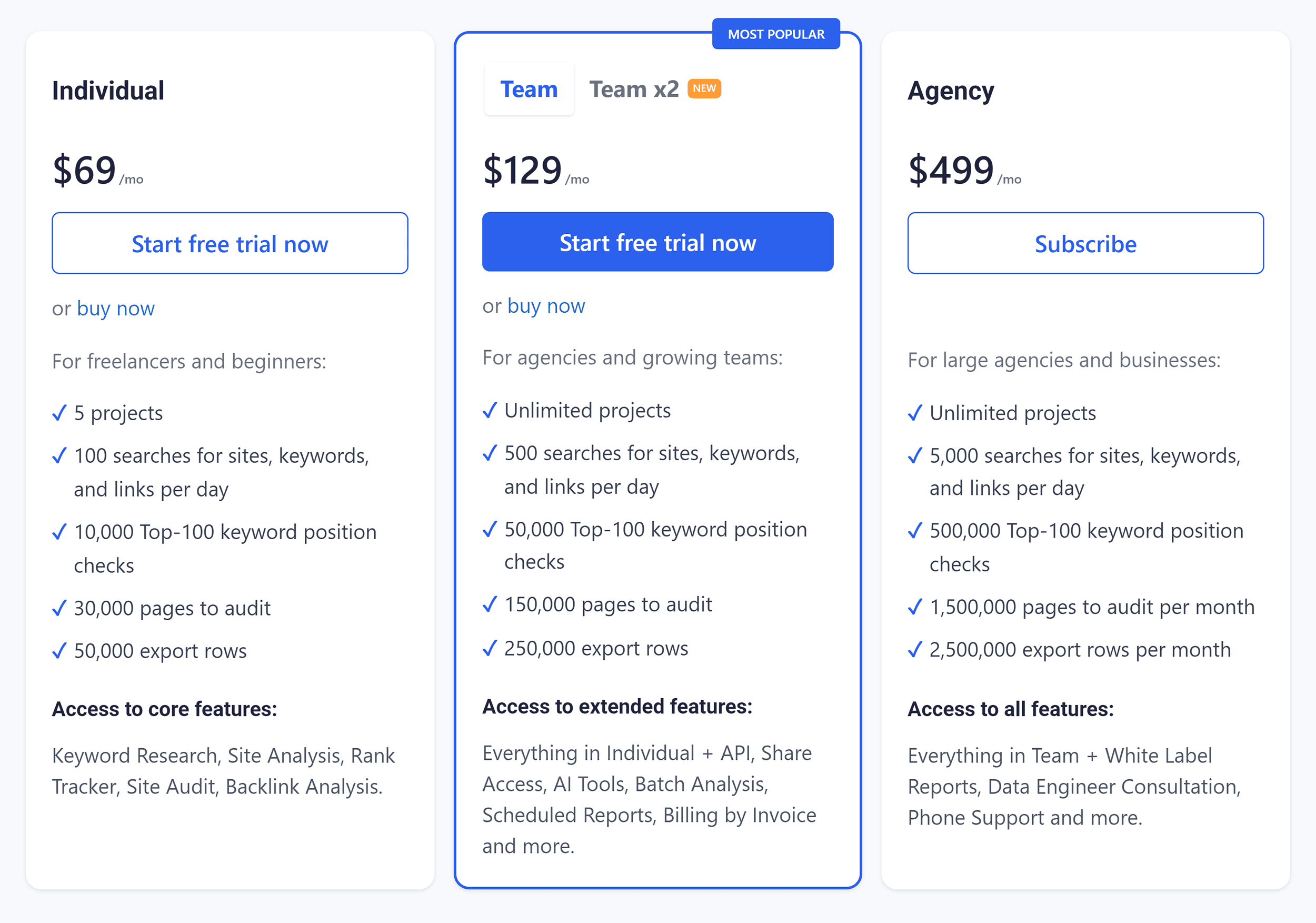
Where it falls behind is raw data and polish.
Reviews consistently describe Serpstat as a solid budget choice, while noting that most features do not fully match the quality and depth of larger competitors like Ahrefs and Semrush.
In practice, Serpstat makes sense if you want a cheaper all-in-one suite with AI search tracking built in.
If you live in link data and large-scale keyword research every day, Ahrefs will feel more powerful, but you’ll pay a lot more for it.
Free Alternatives to Ahrefs
To be clear, there is no direct free comparison to Ahrefs.
However, there are some functionalities you can access for free, especially for one domain.
Google Search Console (For Performance Data)
Google Search Console gives you the part of Ahrefs it can’t provide: first-party data from Google.
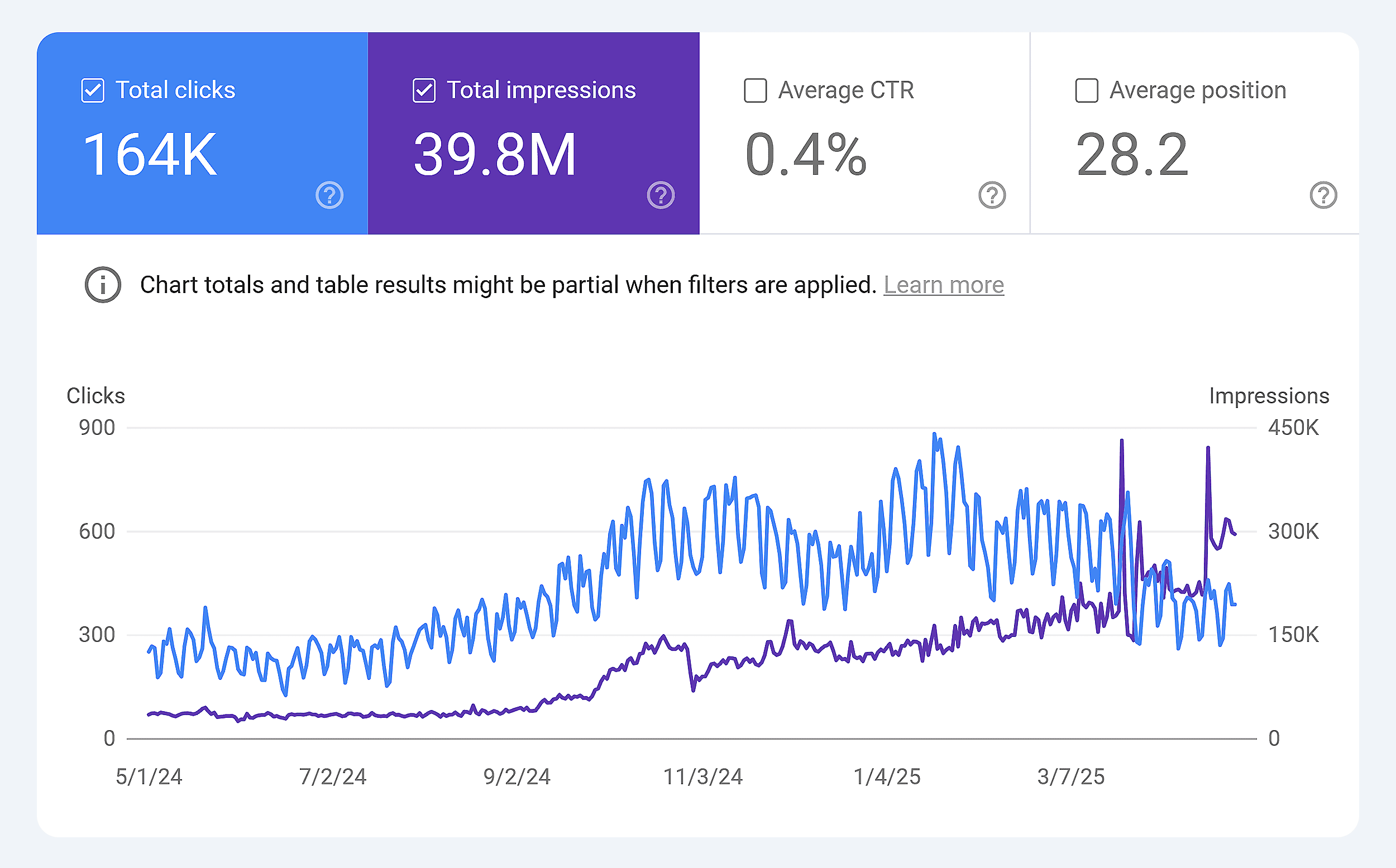
Once you verify your site, head to Performance → Search results to see the queries, pages, impressions, clicks, and average positions your site already earns.
Use filters to drill into a single page, country, device, or query type, and you’ve got a cleaner view than most rank trackers give you for your own site.
To approximate “top pages” and “top keywords” reports from Ahrefs, sort by clicks or impressions and export the data.
You can quickly spot pages that rank on page 2–3 and get a lot of impressions (easy win updates), queries you didn’t know you ranked for, and branded vs non-branded demand.
Combine this with a quick manual SERP check, and you’ve covered a big chunk of what people use Ahrefs’ Site Explorer and rank tracking for on their own domains.
Keyword Surfer (For Keyword Ideas)
Keyword Surfer lets you do lightweight keyword research directly in Google’s results.
After installing the extension, type in a seed keyword and you’ll see estimated search volume appear under the search bar, plus a sidebar of related keyword ideas, volumes, and suggested content length.
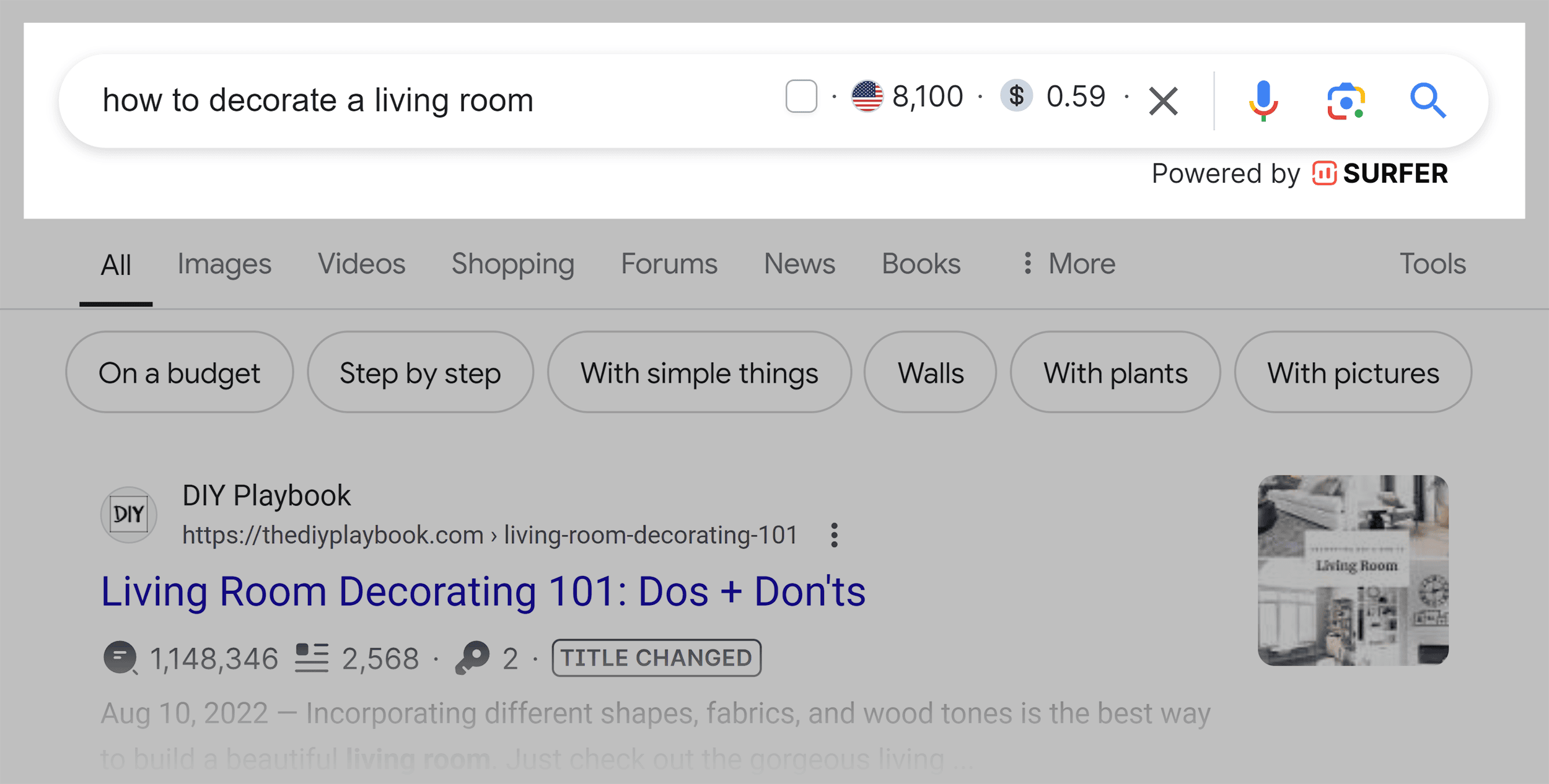
Instead of opening a separate keyword tool, you can brainstorm topics just by searching the way your audience would.
To mimic basic Ahrefs keyword research, plug in a few “head terms” (like “crm software,” “wedding venues,” “roof repair cost”) and use the sidebar to collect long-tail variations and questions.
Add anything promising to a spreadsheet with volume and intent notes.
Then click through the SERPs to see who’s ranking and what types of pages they use (guides, tools, product pages).
It’s not as deep as a full keyword database, but it’s more than enough to build a starter content plan for free.
Moz’s Free Link Explorer (For Basic Backlink Checks)
Moz’s free Link Explorer gives you a simple snapshot of a site’s backlink profile without paying for a full link index.

Create a free Moz account, drop in your domain (or a competitor’s), and you’ll see top linking domains, a Domain Authority score, and a sample of inbound links and top pages.
That covers the “who is linking to me and roughly how strong are they?” question that many people lean on Ahrefs for.
Because the free tier limits the number of queries and rows you can see, treat it like a quick triage tool. Use it to identify your highest-authority referring domains, spot obvious junk links, and see which pages attract the most links so far.
You can run the same check for 2–3 competitors to see which sites link to them but not you, then build a small outreach list.
You won’t get full-blown link prospecting like Ahrefs, but you will get enough direction to prioritize your first link building efforts.
Screaming Frog (For Page Health)
The free version of Screaming Frog SEO Spider crawls up to 500 URLs, which is plenty for small sites or focused audits.

Point it at your homepage, let it crawl, and you’ll get a table of URLs with status codes, title tags, meta descriptions, canonicals, word counts, and more. This gives you a similar “site audit” view to what Ahrefs offers, just running locally instead of in the cloud.
To use it like a free Ahrefs Site Audit, start by filtering for 4xx and 5xx status codes to find broken pages, then look at Redirects, Missing/duplicate title tags, Missing H1s, and very short word counts.
Export those lists and turn them into a simple fix-it backlog: clean up broken links, consolidate duplicates, write proper titles, and improve thin content.
If your site is bigger than 500 URLs, you can still use Screaming Frog in “list mode” to audit priority URLs (like your top pages from Google Search Console) without needing a paid license.
What Am I Missing?
So that’s my list of 7 Ahrefs alternatives as well as a few free options to try to hodge-podge together the wider functionality.
Now see our ultimate guide to Semrush, our top recommended Ahrefs alternative.
Backlinko is owned by Semrush. We’re still obsessed with bringing you world-class SEO insights, backed by hands-on experience. Unless otherwise noted, this content was written by either an employee or paid contractor of Semrush Inc.